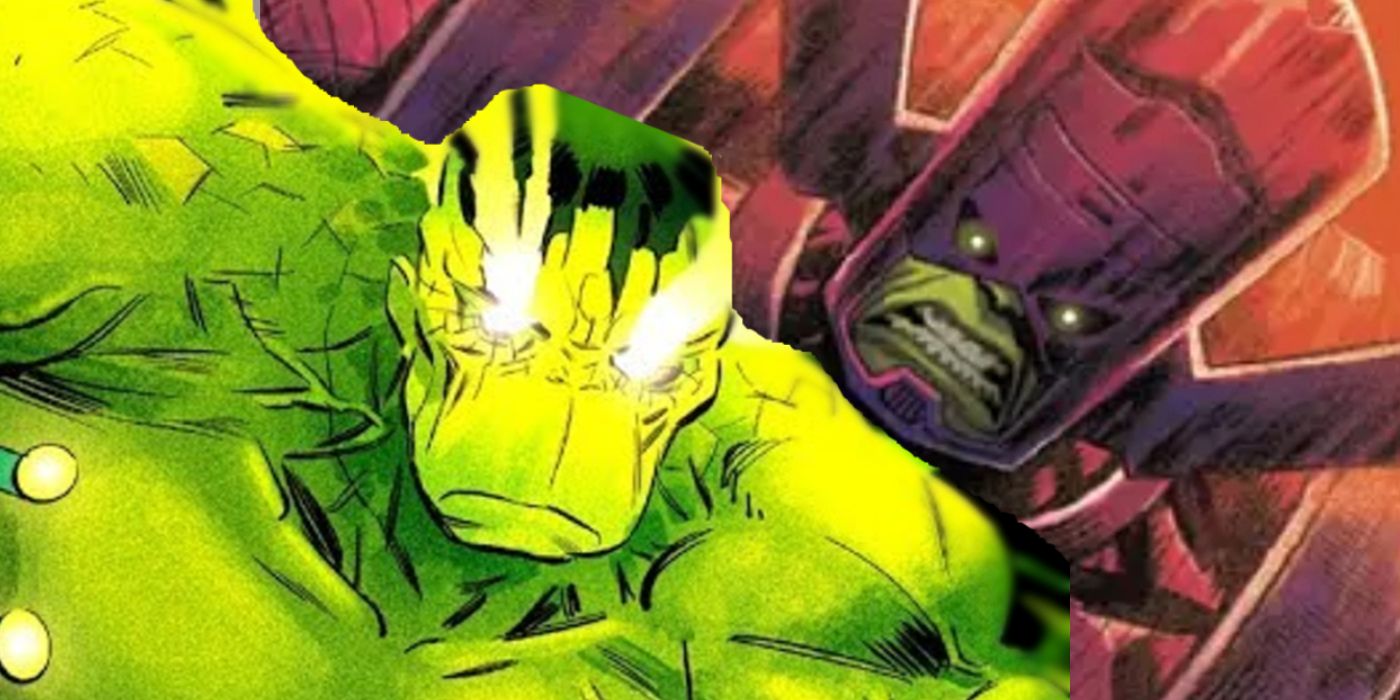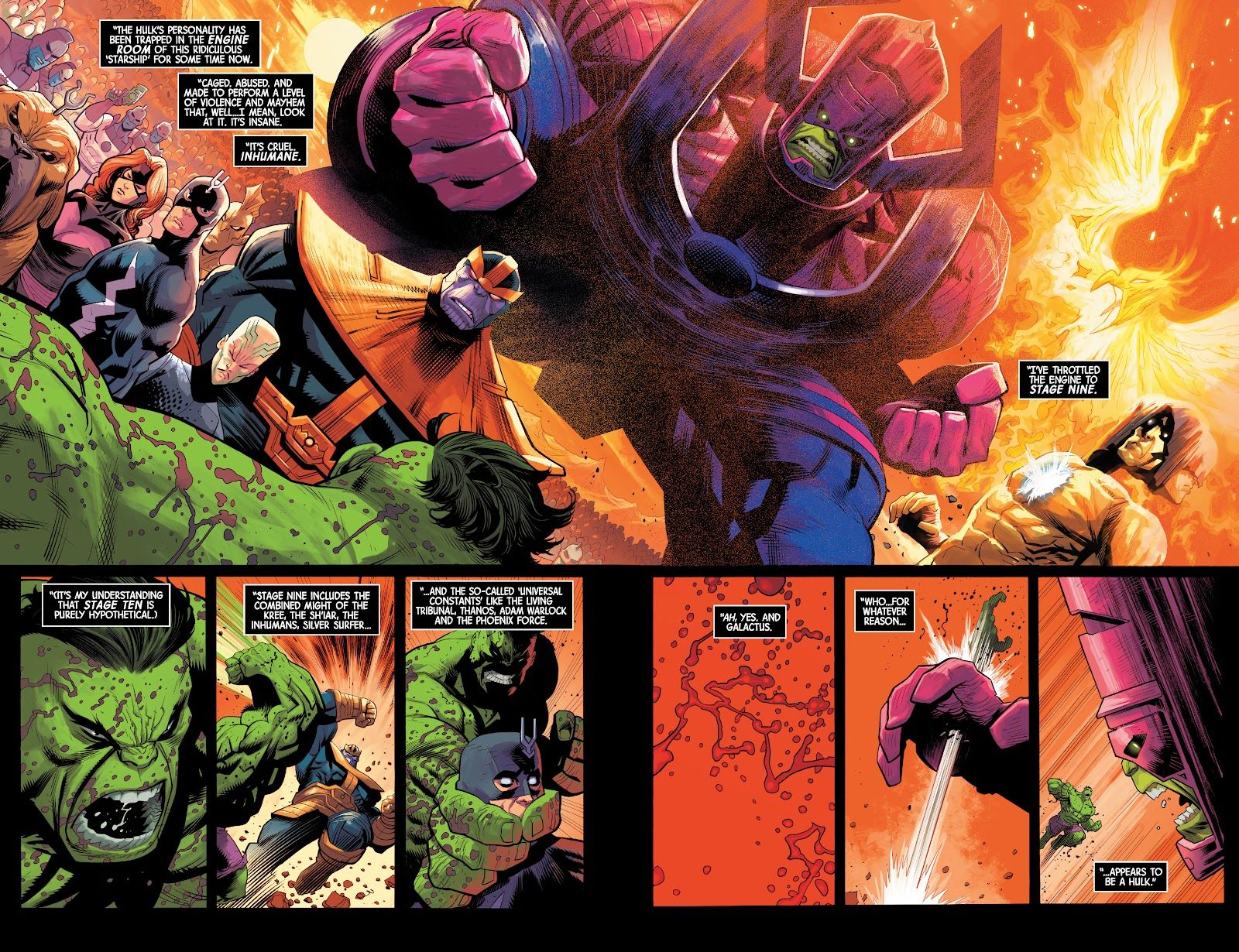Warning: Contains spoilers for Hulk #6
During the acclaimed Immortal Hulk series, it was revealed that, billions of years in the future, the Hulk will become a darker version of Galactus, a force of cosmic destruction, smashing planets and stars one after the other until nothing is left. The current Hulk series also briefly showed a Hulk version of Galactus, meaning that, even if the future depicted in Immortal Hulk was supposedly avoided, this connection between the Jade Giant and the Devourer of Worlds is officially part of Marvel lore.
In Marvel's cosmology, there exists an endless cycle of destruction and rebirth, where each universe (or actually, Multiverse), is destroyed by a cataclysm and replaced by a new iteration. This is the will of the One-Above-All, who created life but also wants to see it perpetually renewed. The last survivor of the Sixth Cosmos, Galan of Taa, was chosen by the Sentience of the Cosmos (the source of the Power Cosmic), to bond with it and become the incarnation of destruction and rebirth in the Seventh (and later the Eighth) Cosmos: the Devourer of Worlds, Galactus. In Immortal Hulk #24-25 (by Al Ewing and Joe Bennett), readers were treated to a view of the end of the current incarnation of the Marvel Universe. Bruce Banner is the last survivor, and he is chosen by the Sentience to be the next "Galactus," but things go really wrong. Hulk devours the Sentience and becomes "the Breaker of Worlds." The One-Below-All, the dark opposite of the One-Above-All, has taken over the Hulk, devouring all his personalities, including Banner. This means that, rather than representing a force of renewal like Galactus, this future Hulk is pure destruction, as the One-Below-All's purpose is to end all life, forever.
The whole Immortal Hulk run was based on this idea of dichotomies: life and death, destruction and rebirth. The follow-up Hulk series by Donny Cates, Ryan Ottley, and Frank Martin, however, stepped very far away. Bruce has literally caged the Hulk, taking control of his body by turning it into a spaceship he "pilots". The Hulk's personality is trapped in the "engine room", where he fights imaginary enemies to build up his rage and power. In Hulk #6, the engine is pushed to the maximum, and the enemies appearing are the "Universal Constants", the supreme beings of the universe, including Galactus, who appears in Hulk form. While there is no apparent reason for this, it is clearly a reference to the dark future shown in Immortal Hulk.
Hulk didn't ultimately assume this "Breaker of Worlds" form, as that future was in theory avoided by tough time travel. However, this reminder shown in a series that is moving as far away as possible from Immortal Hulk shows that the epic nature of the reveal has firmly made it part of Marvel lore, and even Hulk now understands Galactus as a twisted promise of what he could one day become. Immortal Hulk's ending established the idea of Hulk as a force of destruction that is needed to balance God's act of creation, which is very similar to the role that Galactus plays in the universe.
The new link between the Jade Giant and the Devourer of Worlds, and the dark possibility of Hulk as the next Galactus, was a huge moment in Immortal Hulk, so it's great to see that it's being carried forward as part of their shared lore.
Hulk #6 is available now from Marvel Comics.


